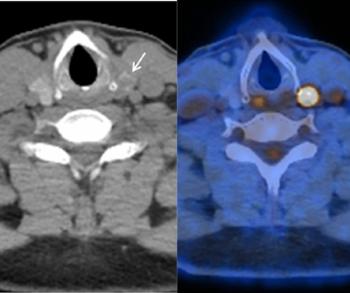
Report from ECR: Studies suggest new value for digital breast tomosynthesis
Digital breast tomosynthesis was found to be superior to 2D digital mammography for determining tumor boundaries, a value at a time when more women with breast cancer are choosing breast conservation therapy, according to a study presented Friday.
Digital breast tomosynthesis was found to be superior to 2D digital mammography for determining tumor boundaries, a value at a time when more women with breast cancer are choosing breast conservation therapy, according to a study presented Friday.
Another study concluded that tomosynthesis can be combined with standard 2D breast imaging to provide a more complete scan. Tomosynthesis is better at spotting masses, while standard 2D imaging is quicker at spotting calcifications.
The study on tumor boundaries was conducted by researchers at Lund University in Malmö, Sweden, in cooperation with Siemens Medical Systems. It found that tomosynthesis and ultrasound could be used to find tumor volumes 84% and 83% of the time, respectively, in a set of 76 breast cancers. Standard digital mammography could be used to determine cancer outlines just 51% of the time. Breast tomosynthesis had the fewest number of tumors that could not be measured (5) and tended to spot those not visible on ultrasound.
The researchers also looked at how the modalities compared on breast density and found that tomosynthesis was best at showing tumor margins for all three categories (fatty, medium density, and high density). Digital mammography had a high percentage of measureable tumors for fatty breasts but lower levels for intermediate and high-density breasts. The opposite was true for ultrasound.
Overall conclusions were that breast tomosynthesis is superior to 2D mammography in the preoperative staging of tumors and that anatomical noise is a main factor in obscuring tumors.
Underlying the second study was the idea of combining a standard 2D digital scan with a combined 3D tomographic/2D scan in a single acquisition.
Tomosynthesis reduces tissue overlap and thus structural noise, a quality that helps it better show breast masses, said Dr. Andrew Smith, an employee of Hologic, a company that sells a breast tomosynthesis system in the European market. Microcalcifications, on the other hand, are not affected by tissue overlap and noise and thus are more amenable to viewing by 2D scans. The 2D scans also take less time to review than the 3D data set.
Ultimately, it is likely that 3D tomographic scans will become the standard of care, but in the meantime, a transition from 2D acquisitions must take place, Smith said.
The study culled data from 1000 patients to identify a 310-patient data set with 51 cancers that were evaluated by 27 radiologists.
Looking at all cases, the mean area under the ROC curve was 0.825 for the 2D scans and 0.895 for the combined 2D plus 3D scans. The standard deviation was 0.032 for the 2D and 0.023 for the 2D/3D scans.
In cases without calcifications, the mean area under the ROC curve was 0.827 for the 2D scans and 0.922 for the combined 2D plus 3D scans. The standard deviation was 0.044 for the 2D and 0.027 for the 2D/3D scans.
For more online information, visit Diagnostic Imaging's
Newsletter
Stay at the forefront of radiology with the Diagnostic Imaging newsletter, delivering the latest news, clinical insights, and imaging advancements for today’s radiologists.




























